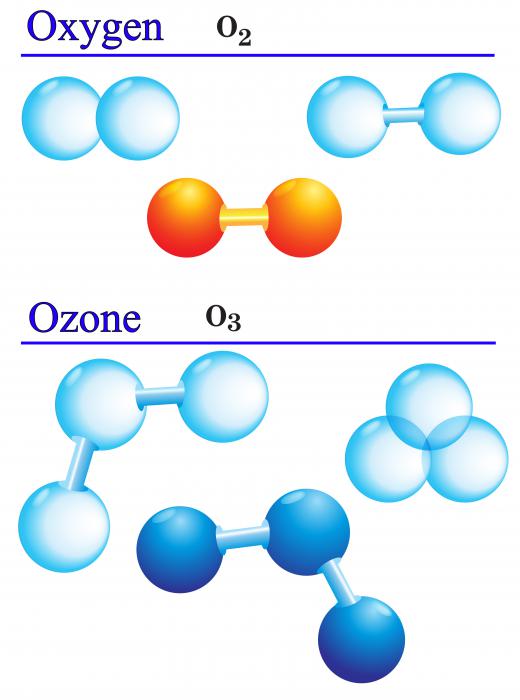What Are Reactive Oxygen Species?
Reactive oxygen species (ROS) are molecules that contain the element oxygen and are chemically very active. These molecules, which can take a number of forms, attain this reactivity due to one common characteristic: the presence of an electron that has only a single bond. Electrons in this state have a strong tendency to try to form stronger bonds, leading to chemical reactions. Reactive oxygen species may be as simple as molecules of superoxide (O2-)or more complex molecules, like hydrogen peroxide (H2O22). These molecules, sometimes called oxidants or free radicals, are found within the human body and are both utilized and formed by cellular processes.
The cells of the human body use superoxide molecules in their conversion of food to energy and other metabolic functions. These biochemical processes are very complex, but many of them begin with superoxide molecules being converted to other reactive oxygen species, which are then utilized in further reactions. The body has natural means for dealing with these molecules, as numerous enzymes serve the purpose of neutralizing them or converting them to a less reactive form. An overabundance of reactive oxygen molecules is potentially harmful and is thought to contribute to many processes destructive to human cells, to DNA and, eventually, to overall health. Many foods and other supplements are marketed as containing antioxidants, which are substances that neutralize excess reactive oxygen species molecules, preventing them from damaging the body.

Molecules like reactive oxygen species may be introduced into the body in a number of ways but are primarily introduced through the air we breathe. Cigarette smoke and industrial exhaust contain large amounts of these types of molecules, which are known to be damaging to human tissues, particularly the lungs. Ozone (O3, a naturally occurring molecule, is also very chemically reactive, although present only in small amounts in the Earth's atmosphere.

Reactive oxygen species can damage human DNA by reacting with proteins contained within DNA strings. This damage can sometimes be repaired by the body's natural defenses, but these defenses are imperfect, and when the repairs fail, the damage can lead to genetic mutations. Oxidative damage to DNA can cause reduced enzyme activity and has been linked to cancer. This potential for damage to the body's cells and tissues, due to a surplus of some reactive oxygen species in combination with a necessity for a certain number of some ROS molecules, creates a kind of paradox. The body needs and utilizes some kinds of these molecules for basic metabolic functions, but an excess can be detrimental.
AS FEATURED ON:
AS FEATURED ON:












Discuss this Article
Post your comments